It's a piece of Junk
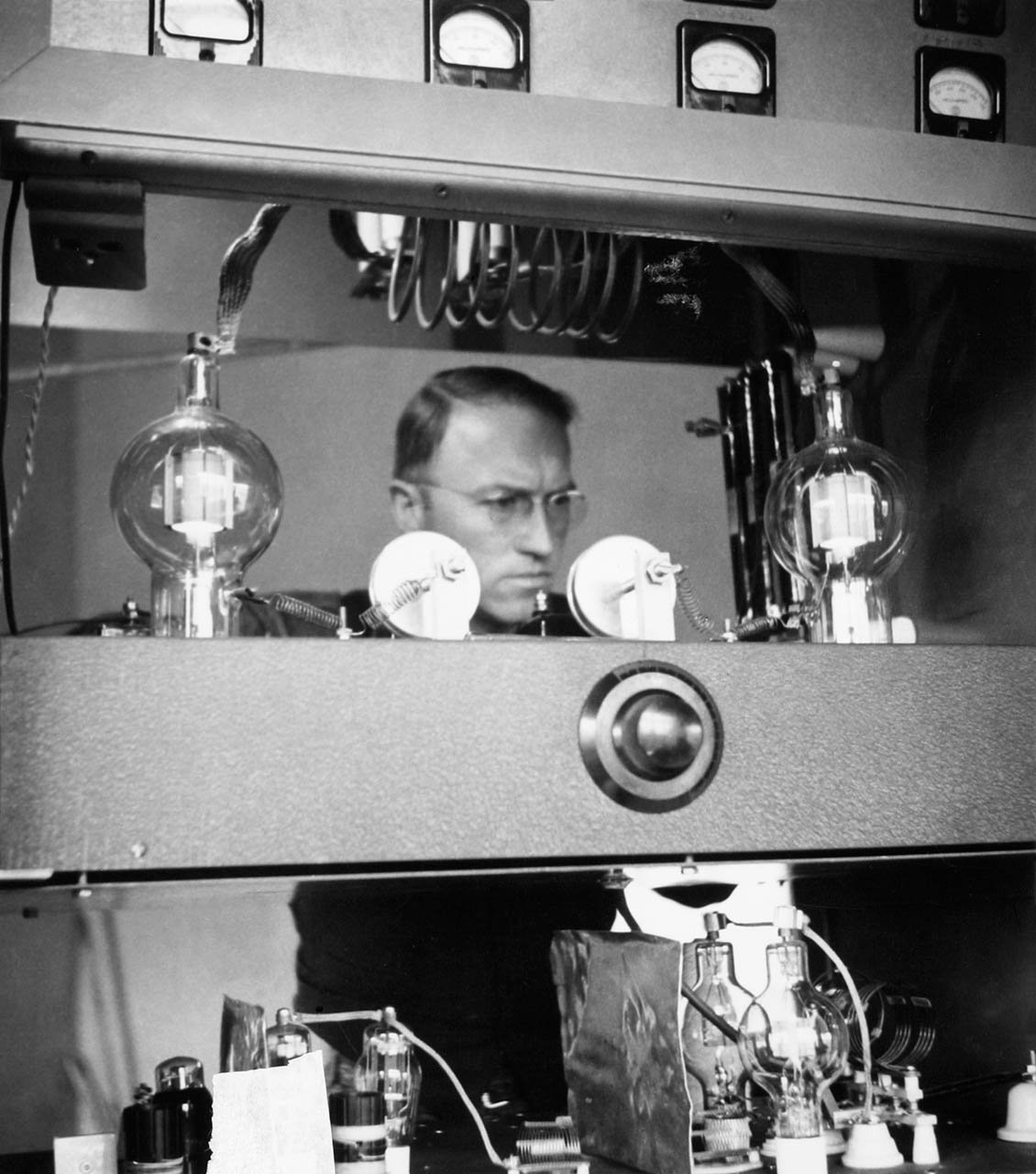 |
Clarence Moore was a pastor, teacher and radio-enthusiast who inexplicably felt God leading him to drive from his home in Michigan to Chicago. Moore obeyed and several hours later arrived unannounced at the house of his relative, Rev. "Uncle John" Meredith.
Once there, Moore asked Meredith if perhaps he had some idea why he (Moore) was there. Meredith realized that God must have wanted Moore to look at a used 5,000-watt transmitter that he was helping HCJB purchase. "Uncle John's" radio programs were aired on WMBI (Moody Bible Institute) and Radio HCJB.
When Moore and Bill Hamilton (another radio enthusiast) inspected that used transmitter, they found it to be an “obsolete piece of junk.”
Clarence Jones asked Moore if he could design and build HCJB a new 5,000-watt transmitter. Moore agreed and began work on the project at the Peoria factory of a generous Christian businessman. Moore soon realized that for just a bit more money, he could double the power to 10,000 watts.
The new high-powered transmitter was inaugurated by Ecuador's president on Easter Sunday, 1940. With 10,000 watts of power, HCJB's signal could clearly be heard around the world and allowed the mission to begin adding many languages.
But high power caused other problems. One night, electrical current began arcing off of the ends of the antenna into the air, literally melting the antenna elements. This was caused by combining high power with the high altitude (9,200 ft) and atmosphere of Quito. To temporarily solve this problem, Moore put copper toilet bowl floats on some of the tips of the antenna, but it needed a better solution.
Clarence Moore found that solution by inventing a new antenna design, which in effect had no ends, called a cubical loop, or Cubical Quad Antenna. This new antenna was installed at HCJB in Quito in 1942, and refined versions of it were used by the mission for another some 6 decades. The Cubical Quad Antenna continues to be used by many radio enthusiasts around the world.
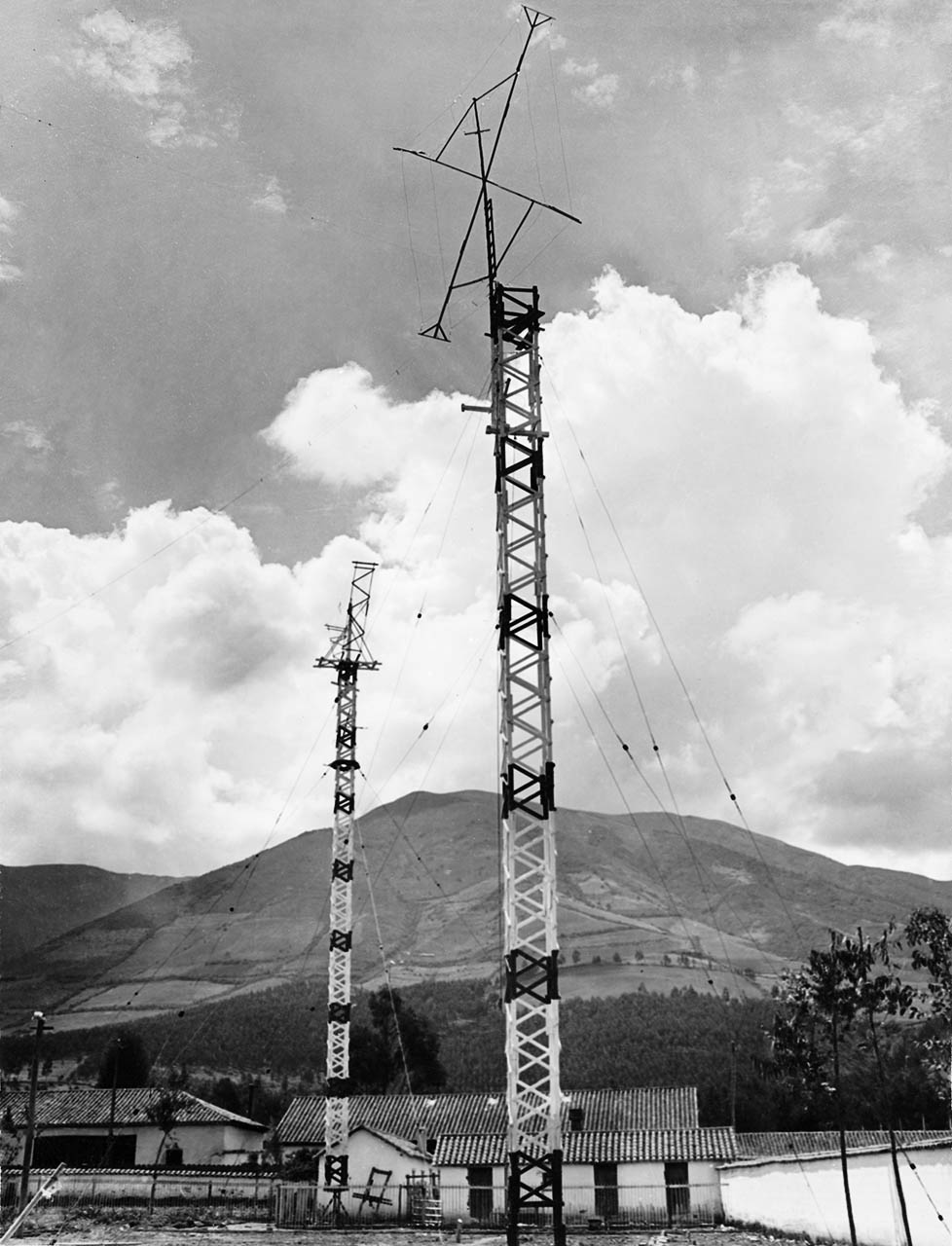 |
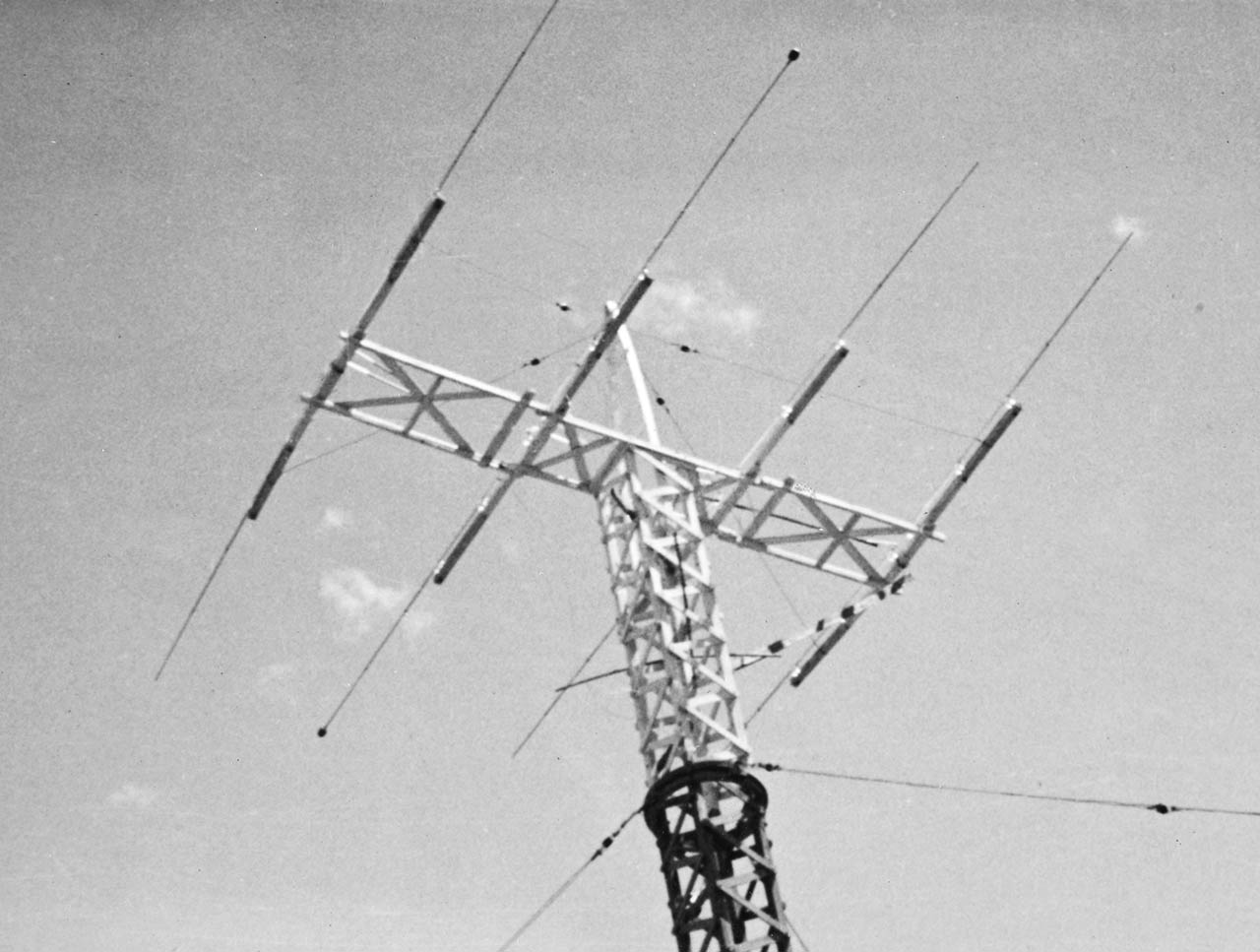 |
QSL cards and Letters to Listeners
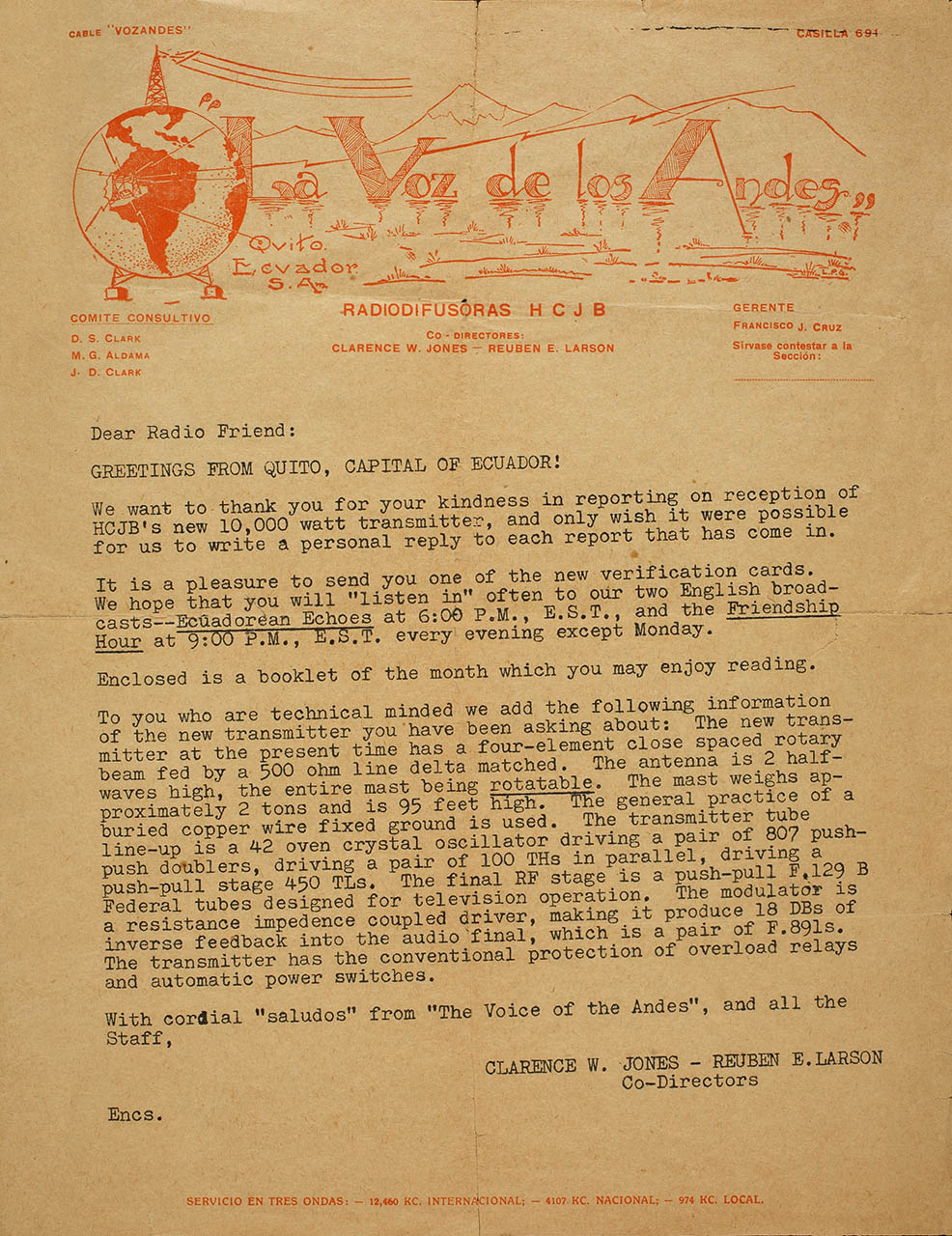 |
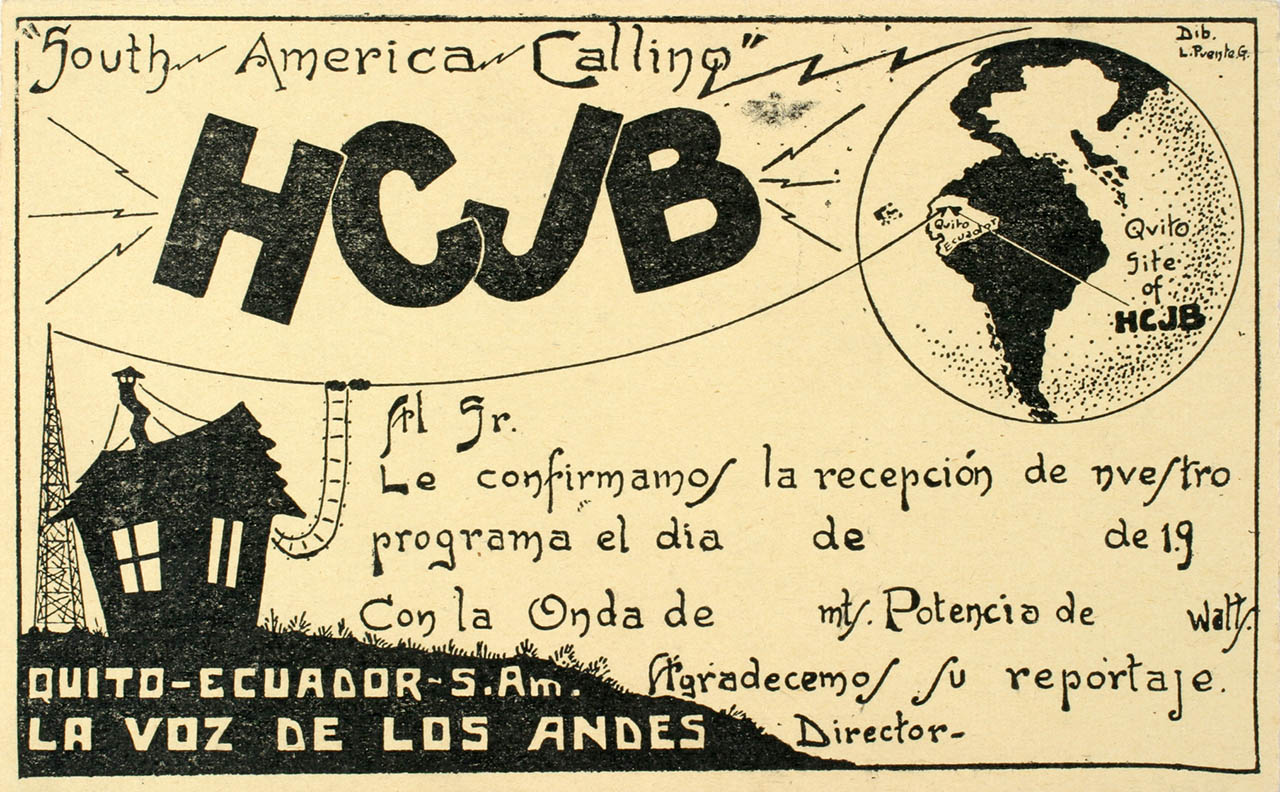 |
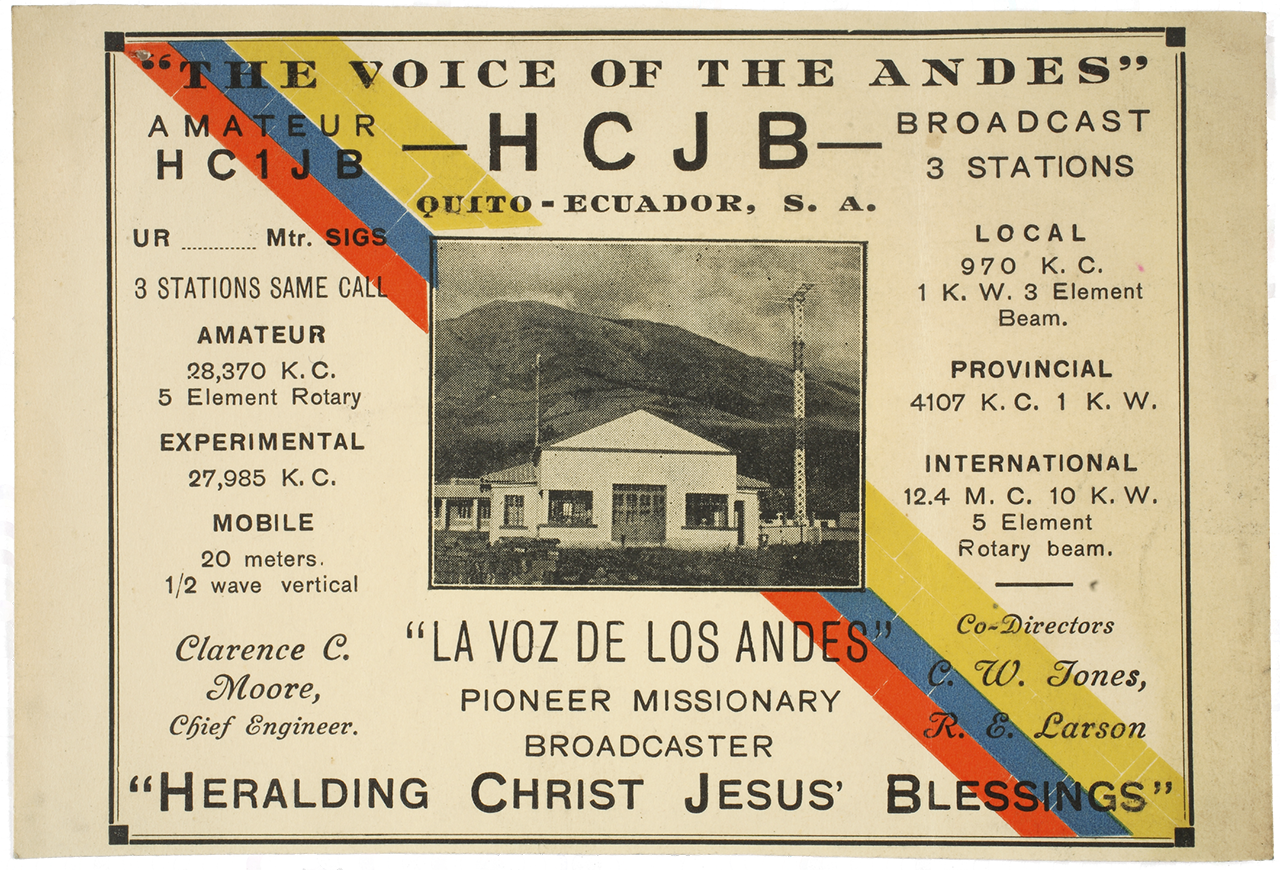 |
Parts is Parts
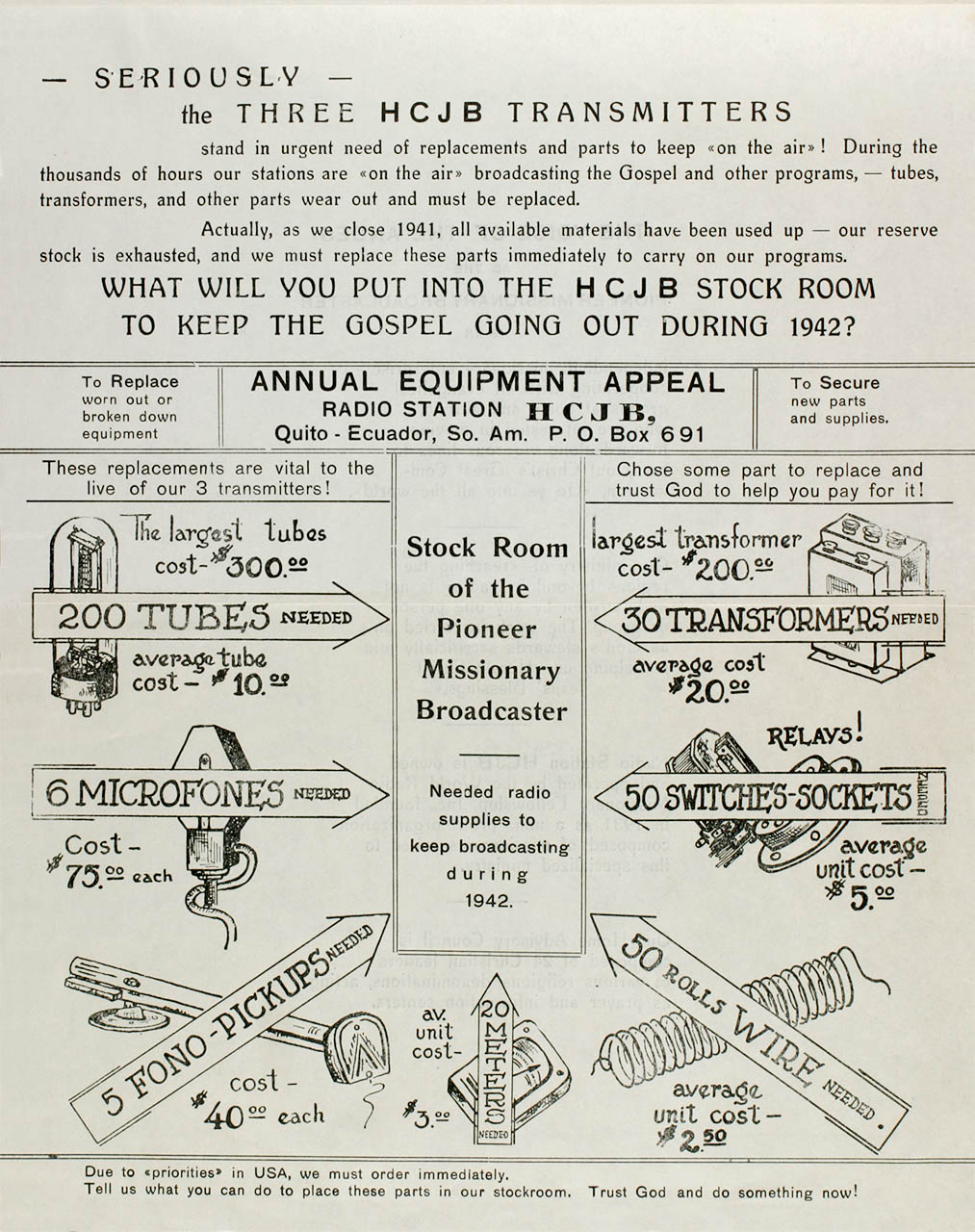 |
The Day the Tower Fell
by Clayton Howard
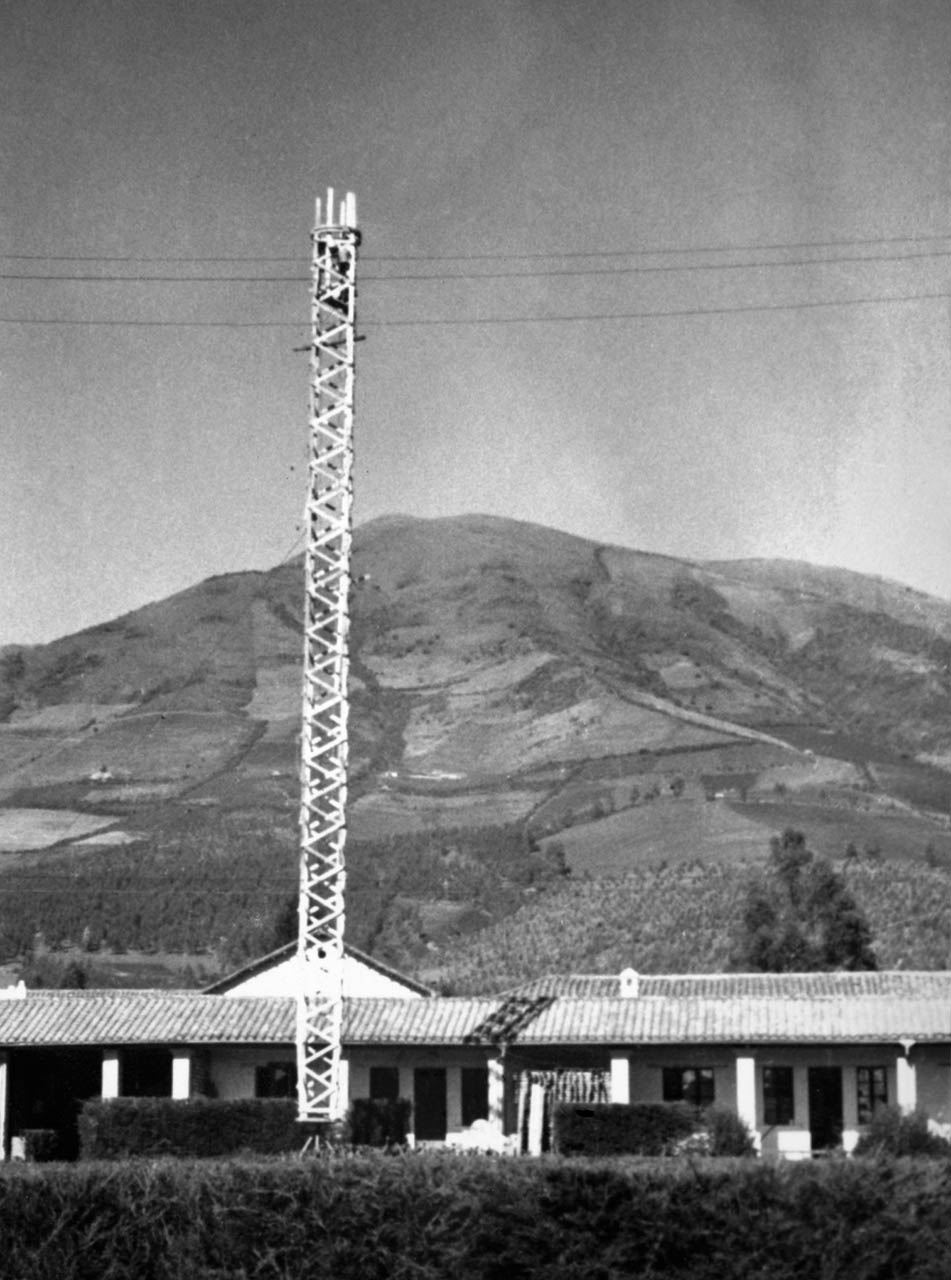 |
It all took place back in late 1942. I was given the responsibility to erect a new tower to hold the new 31 meter antenna. Dr. Miner B. Stearns offered to assist me. The tower was square in shape and was put up much like a large scale erector set. The wood pieces were cut on the ground and drilled with holes where the bolts would go to hold it together. Anchors were placed in the ground to hold the guy wires needed to hold the tower in position after it was completed.
We worked inside the square tower as we felt that was safer than working on the outside. We would climb up the tower as far as it had progressed, pull up the next piece of wood and bolt it in place. As the tower grew we moved the guy wires to a higher position on the tower. We used a heavy rope to hold the tower in position as the permanent wires were moved.
On the nearly fatal day we were probably up to a height of about 40 feet and things were progressing smoothly. We were moving one of the guy wires to a higher position so had just placed the rope substitute in place.
Dr. Stearns and I began our climb. I don’t believe we had reached the top when the rope anchor slipped from where it had been tied to the ground. All I remember is that I felt the tower begin to move and I immediately realized what has happened. They told me later that both of us began to climb down the tower as fast as we could. The next thing I remember is trying to get out of the tower and being rushed to a medical clinic.
Edmundo Zarria, one of our national technicians, realized that I had left my camera at the top of the tower. He rushed out into the street and saved the camera and also took the pictures of the wreck.
The Lord was very good to us because the tower fell to the south. There was a mud wall around the station compound at that time and the top of the tower landed on the wall.
The base of the tower was elevated a few feet on a special metal base. The part of the tower where we were never hit the ground. If it had, the structure would have collapsed and we probably would have been crushed. If it had been any other guy wire that gave, the top of the tower would have hit the ground and we could have easily been killed.
We have thanked the Lord many times for this protection He gave us. We know it was the Lord who spared our lives that day!
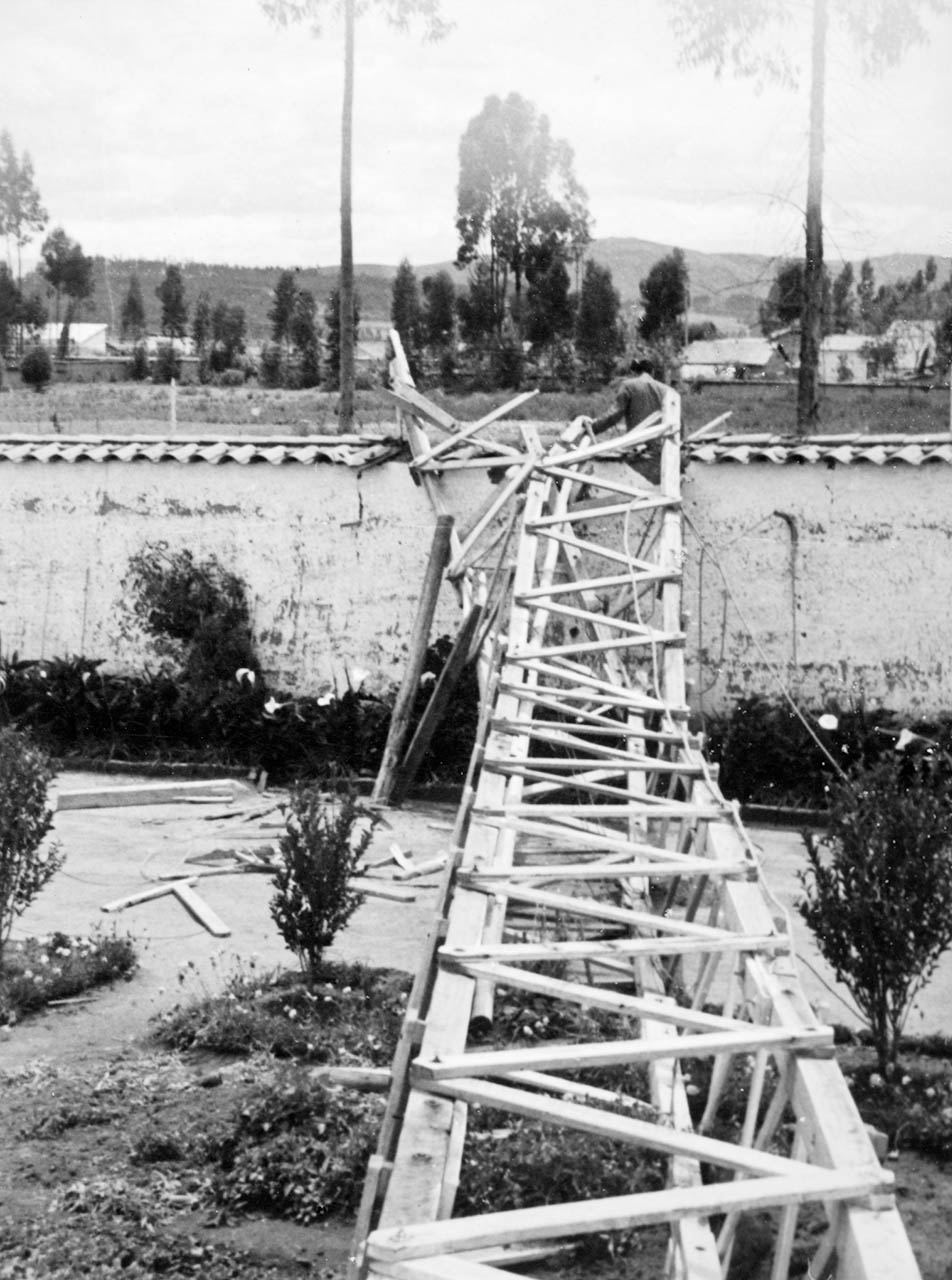 |
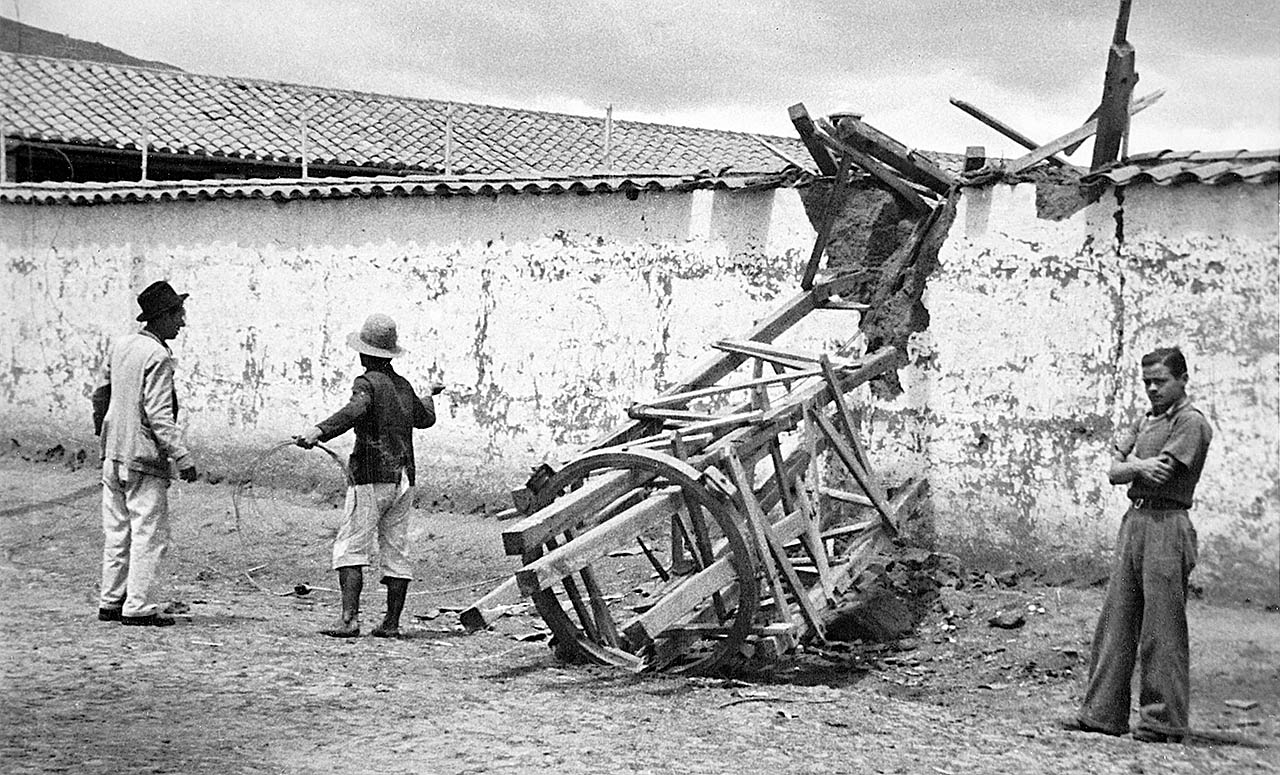 |
